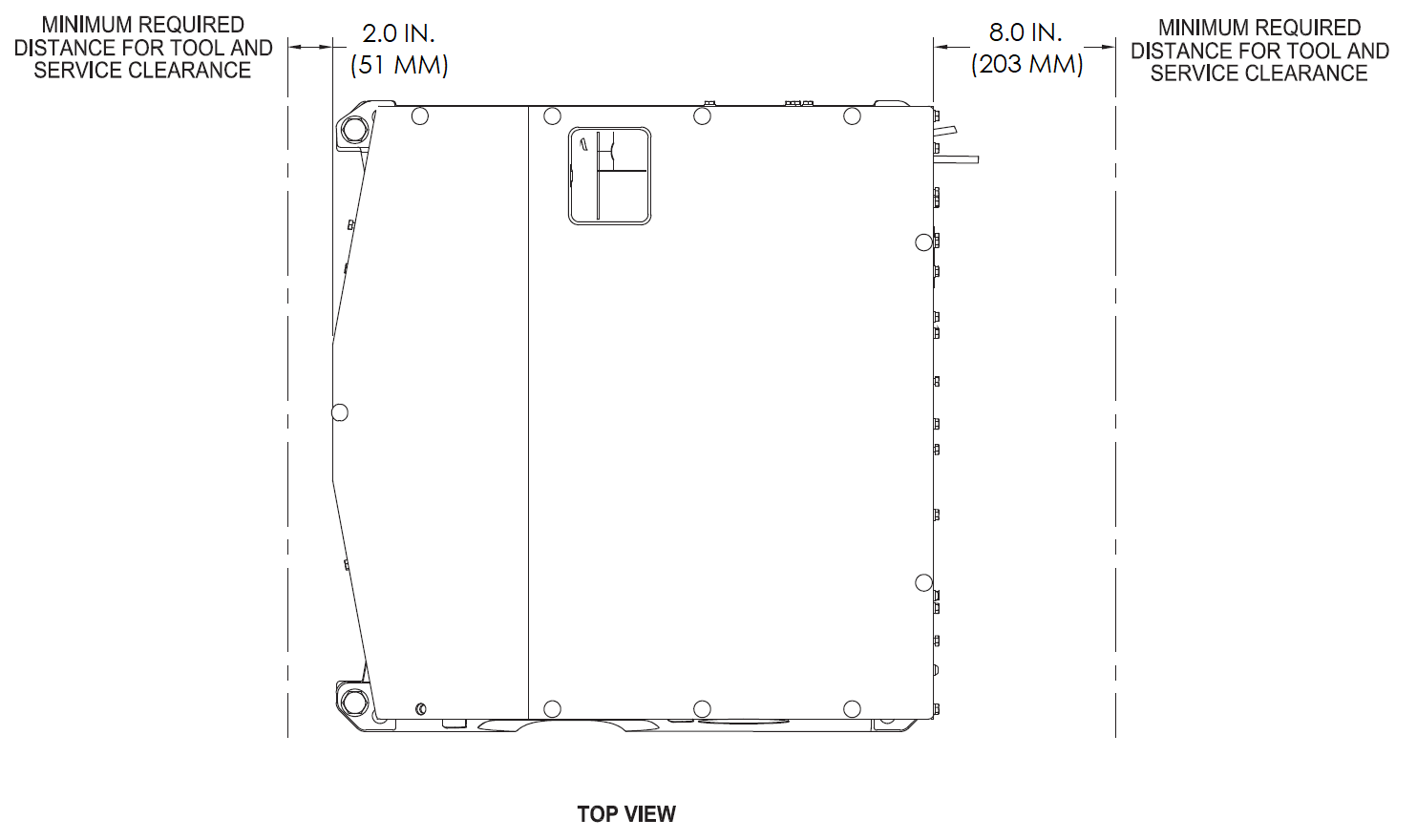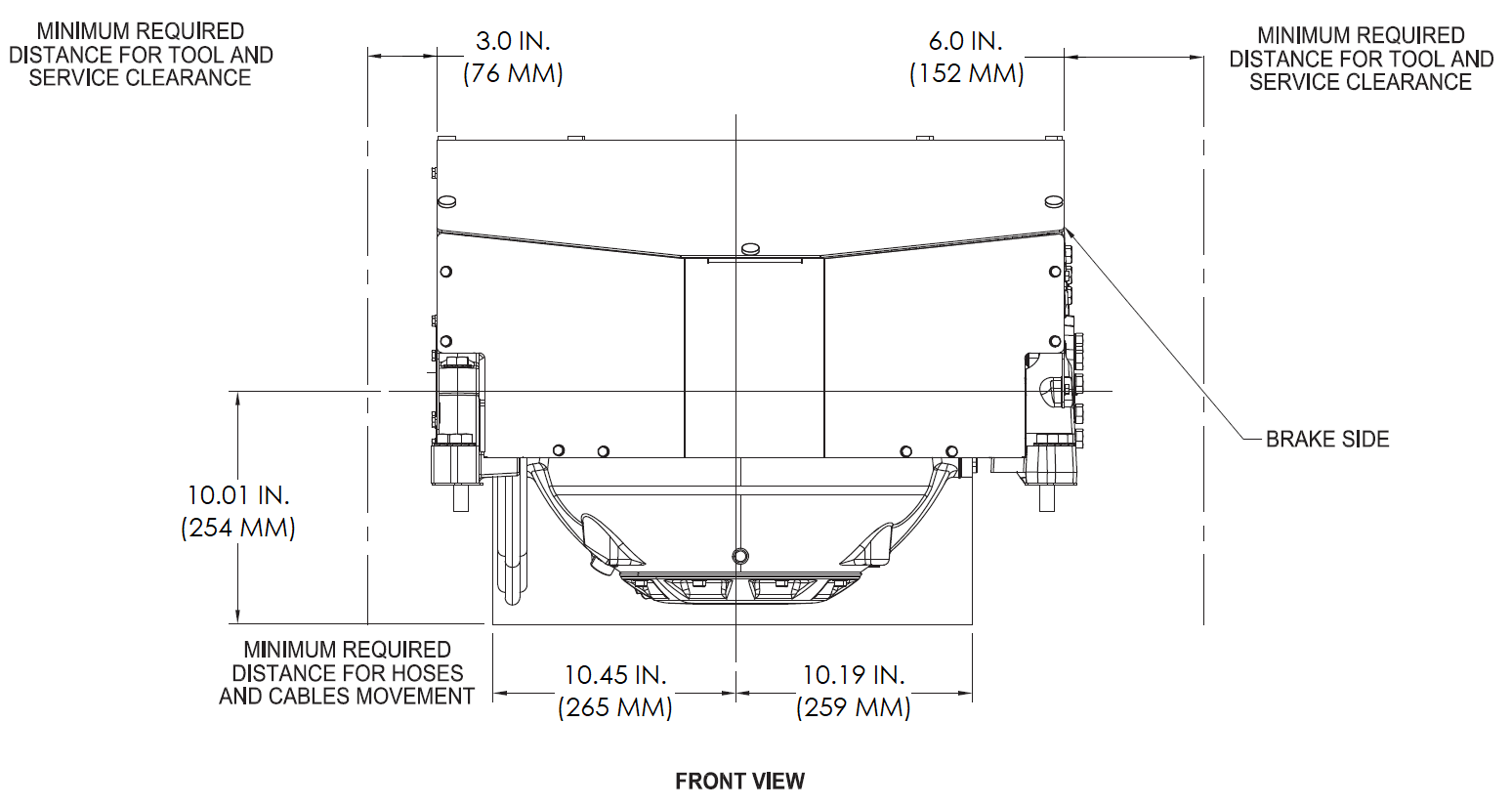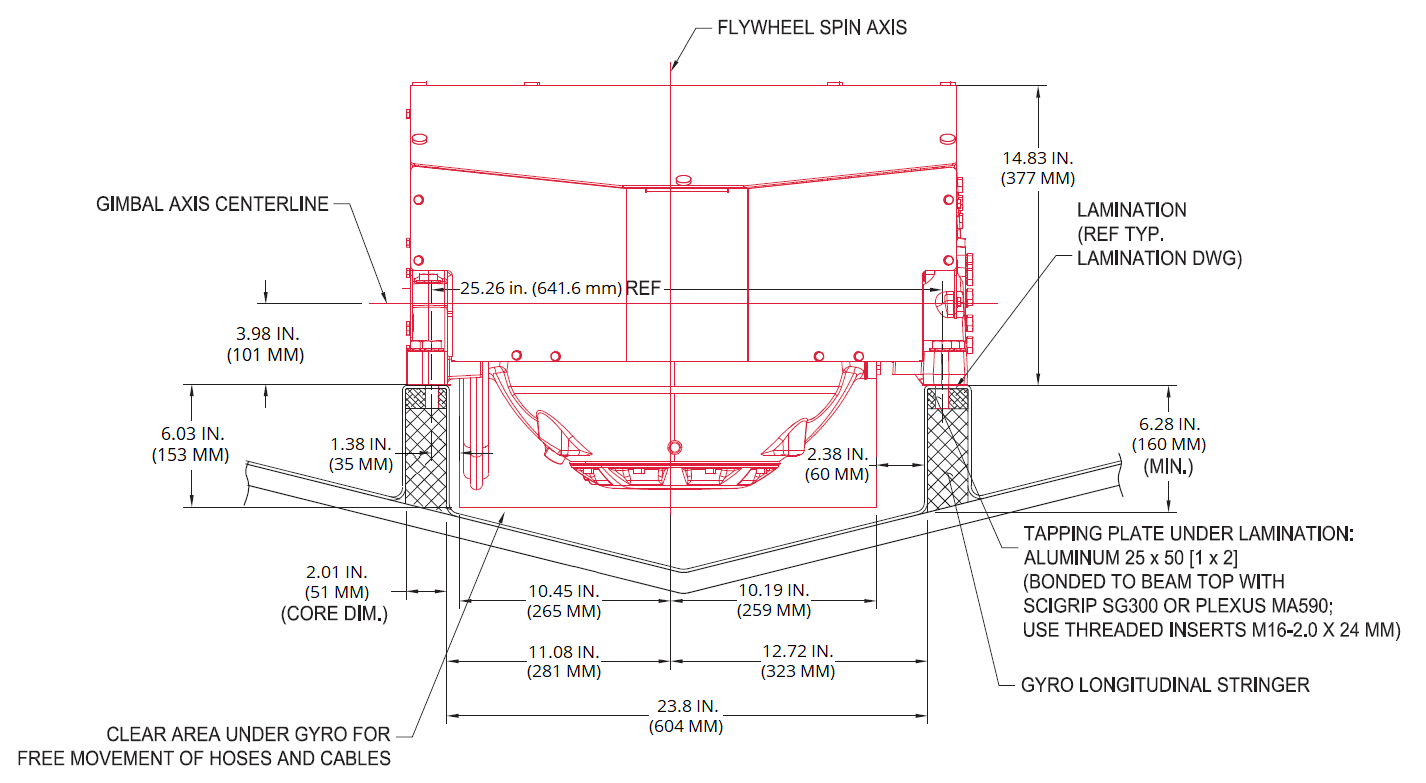Seakeeper 4 / 4.5 Installation Manual (90762-1)
2.2 Selection of Installation Location

Seakeeper can only assess installation location regarding its impact on Seakeeper operation and serviceability. Seakeeper cannot determine how the installation location will affect the vessel’s static or directional stability other than cyclic roll reduction. The Installer is responsible for considering the Seakeeper‘s effect on the CG location, trim, overall stability, and vessel performance.
Selection of mounting location of Seakeeper should consider the following desirable features:
- Consider overhead access or sufficient clearance for removal / re-installation of the Seakeeper for an overhaul in future years. Also, provide adequate clearance for maintenance, as shown in Figures 1 and 2 below.
- The minimum service clearances shown are based on the size of serviceable components and tools required for removal and replacement of these components. The clearances do not consider how the technician will be positioned for access to these areas. Access for a technician must be considered by the installer.
- The clearance and access requirements do not need to be permanent and can be provided via hatches, removable panels, or other temporary means where applicable.
- The installer/designer should consider all these factors for serviceability when defining the installation arrangement.
- Top down access must be incorporated into installation design to allow for adequate regular maintenance, service, and repair.
- The Seakeeper should be installed in a dry space to minimize the effects of corrosion.
- The Seakeeper should be installed near vessel’s longitudinal center of gravity (LCG) to minimize the effects on trim and performance in various loading conditions.




2.2.1 Noise / Soundproofing
Seakeeper noise has been measured under steady state conditions (no wave load) in Seakeeper‘s Engineering Lab and in our Factory Demo Boat. The steady state noise is typically <72 dBC at 1 meter. As the frequencies emitting the highest sound pressures are low (like other marine machinery), it is recommended that the
Seakeeper be installed in a machinery space that is already treated with soundproofing.